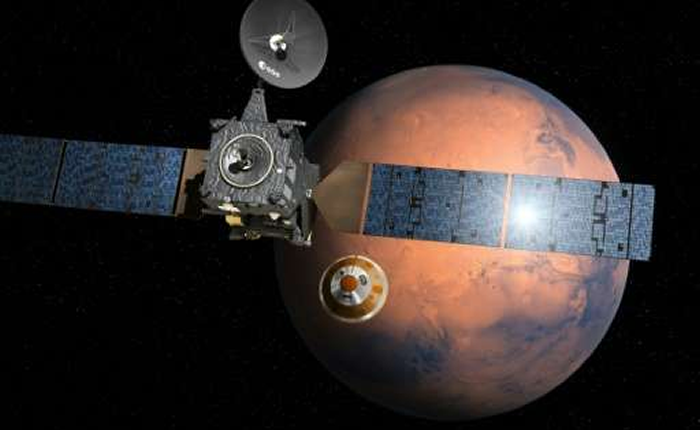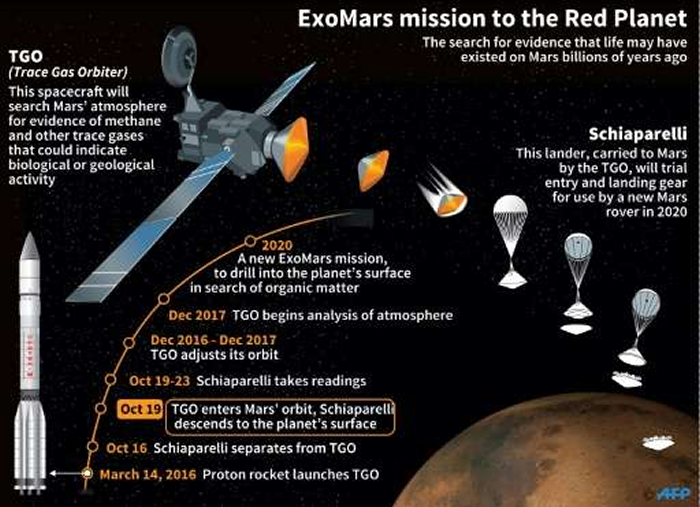Spacecraft on course for the Red Planet
European-Russian spacecraft were on course for Mars Monday after crucial deep-space manoeuvres in preparation for a daring mission to find evidence of life on the Red Planet.
The Trace Gas Orbiter (TGO) mothership despatched the tiny Mars lander called Schiaparelli Sunday on a three-day trek to the Martian surface in a key phase of the joint ExoMars project.
There were nervous moments for ground controllers when the TGO, designed to enter Mars’ orbit to analyse its atmosphere for signs of life, stopped sending status updates for about an hour before coming back online.
In the early hours of Monday, the TGO successfully completed a planned manoeuvre to change course to avoid joining Schiaparelli on the Martian surface, the European Space Agency said.
“Firing its engine for about 1m 46s raised the TGO’s orbit by several hundred km ‘above’ the planet, ahead of its planned orbit insertion on Wednesday,” the agency wrote on its ExoMars blog.
And deputy flight director Micha Schmidt tweeted from mission control in Darmstadt, Germany: “on track for next big event: orbit insertion #ExoMars”. The TGO and Schiaparelli, launched into space in March, comprise phase one of the ExoMars mission.
The TGO, with 600kg (1,300lb) Schiaparelli on board, travelled seven months and 496-million kilometres (308 million miles) from Earth before Sunday’s separation.
It then headed for Mars orbit while the paddling pool-sized lander began a million-kilometre descent to the surface, where it is scheduled to arrive on Wednesday.
ExoMars is Europe’s first attempt at reaching our neighbouring planet’s hostile surface after its first failed bid 13 years ago to place the first non-American rover on Mars.
The TGO’s job will be to sniff the Red Planet’s thin, carbon dioxide-rich atmosphere for gases possibly excreted by living organisms, however small or primitive.
More information: Phys.org



Comments are closed, but trackbacks and pingbacks are open.